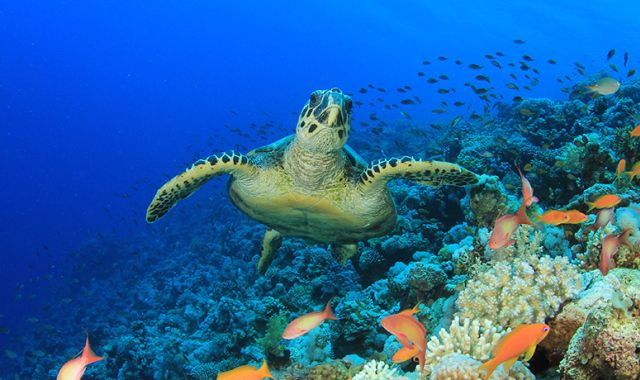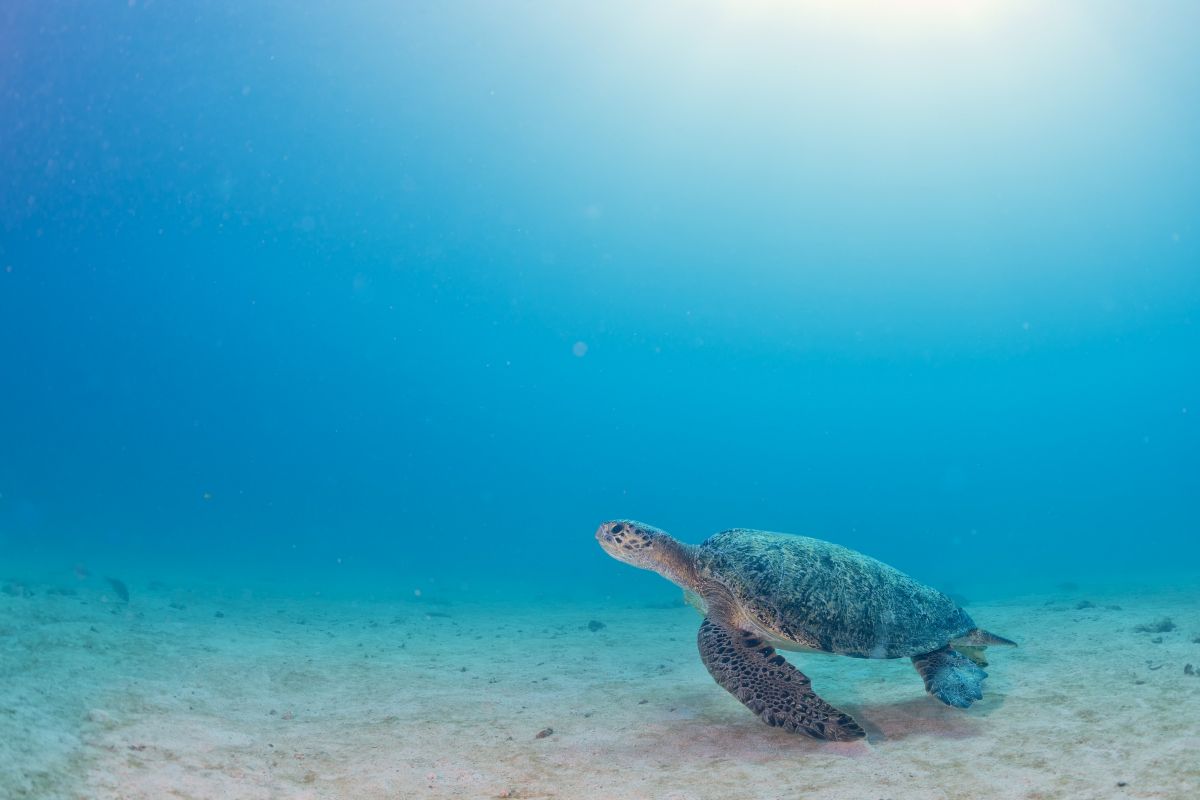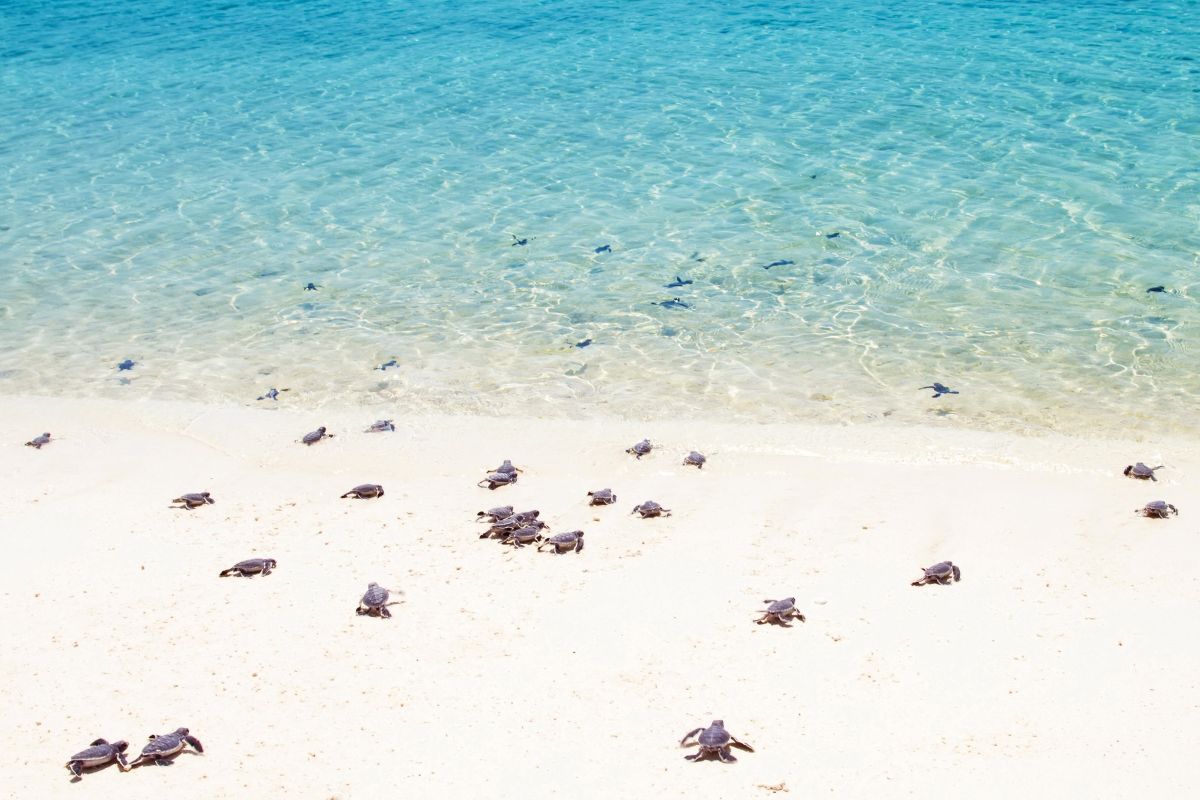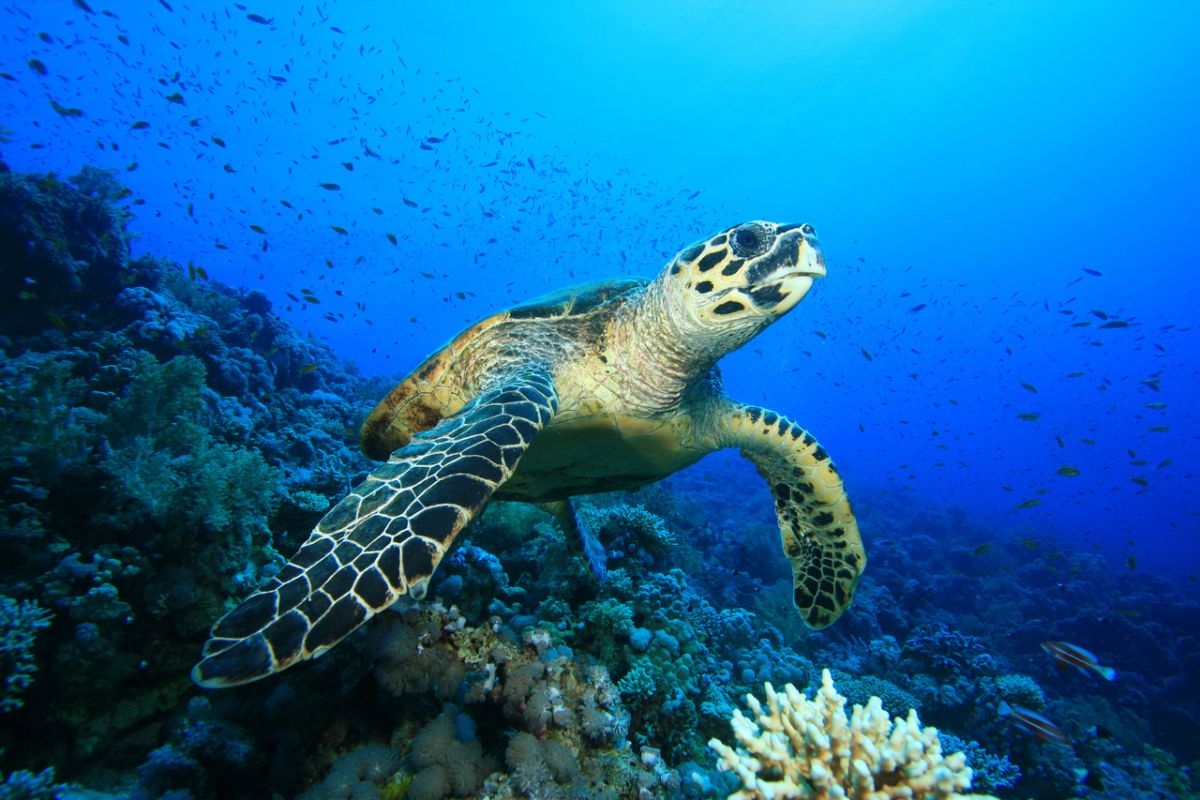- More More
- Blog
- Inspire me
- Groups
- Offers More
- Dive Courses More
- Liveaboards
More

Liveaboard Trips
On-board accommodation offering the opportunity to live right over the dive sites and to experience secluded dives...
Diving regions...
- LATEST AVAILABILITY BY REGION
- Red Sea availability
- Maldives availability
- Indonesian availability
- Socorro Mexico availability
- Galapagos availability
- ALL LIVEABOARD DIVING REGIONS
- Bahamas
- Bikini Atoll
- Caribbean
- Cocos Island
- Destinations
MoreDIVING REGIONS...
Our Top destinations....Why not try....
Find a trip
- Resort
- Liveaboard
Fantastic Turtles

20 May 2020, Jo Charter
Team member Jo Charter shares why the turtle is her favourite marine animal.
The turtle has to be my favourite marine animal, and I get excited each time I see a one. Whether it’s a big chunky green or a snappy little hawksbill, I will endeavour to point it out to my buddy using the well-known hand signal we all know and love. My initial bond was formed when I spent some time volunteering at a Turtle Rescue and Education centre on Zanzibar Island ten or so years ago. Each turtle had its own way to say hello every morning when I would approach the sheltered area, they really are intelligent beings.

I think turtles are little miracles dressed in a hard shell. Females will lay up to 200 eggs in a single nest, cover them up and wish them the best of luck as she makes her way back to the water. The ambient temperature of the nest will dictate if the turtle hatchlings will be male or female. After 40-60 days the hatchlings will emerge from their eggs and nest and make their way towards the sea guided usually by the moon, starlight, or setting sun. For those that face the perils of the beach dash and make it to the ocean, the next miracle begins as they drift in the open ocean for several years. After this time, they will return back to shorelines and coral reefs, where we divers are most likely to enjoy their company. The turtles often spend large amounts of time in a certain area, becoming residents. Between the ages of 17 and 30 turtles are ready to buddy up with a mate and start the next round of little miracle shelled beings, which they will do every 2-3 years. Now, do they do this on the closest beach because that’s nice and easy? No. The females will return to the beach that she was born on to lay her eggs, sometimes this can be thousands of miles away. How I hear you ask? I like to think it's magic, but the latest theory is that they rely on unique magnetic signatures along coastlines.

Very few turtles reach adulthood for various reasons including human interference, the ones that do are able to contribute to the next generation. Currently six of seven species of turtle are facing extinction. Each time I see a particularly big turtle, I get super excited. Depending on the species, turtles need between 10 and 50 years to reach sexual maturity, so these large adults are a key component to their species survival. Although it may seem like we regularly spotted these nonchalant creatures on dives, their numbers are in danger. Research projects such as HEPCA work hard to collect data on turtle behaviour, focusing on feeding and nesting grounds to understand the essential role they play to help keep the Red Sea healthy.

Some of my best turtle sightings have been at Apo Island, Dauin in the Philippines, Tulemben and the Islands in Bali, and the Red Sea. Turtles can be spotted in all tropical waters, and if you want to see them surrounded by beautifully healthy coral that’s teeming with marine life then you need to add Apo Island, Dauin to your bucket list. So during your next surface interval keep your ears open for the gasps of breath and your eyes out on the water to spot a mouth and nose partially beaching the waves, with the promise that you’ve got a little hard shelled miracle to look forward to on the next dive.





